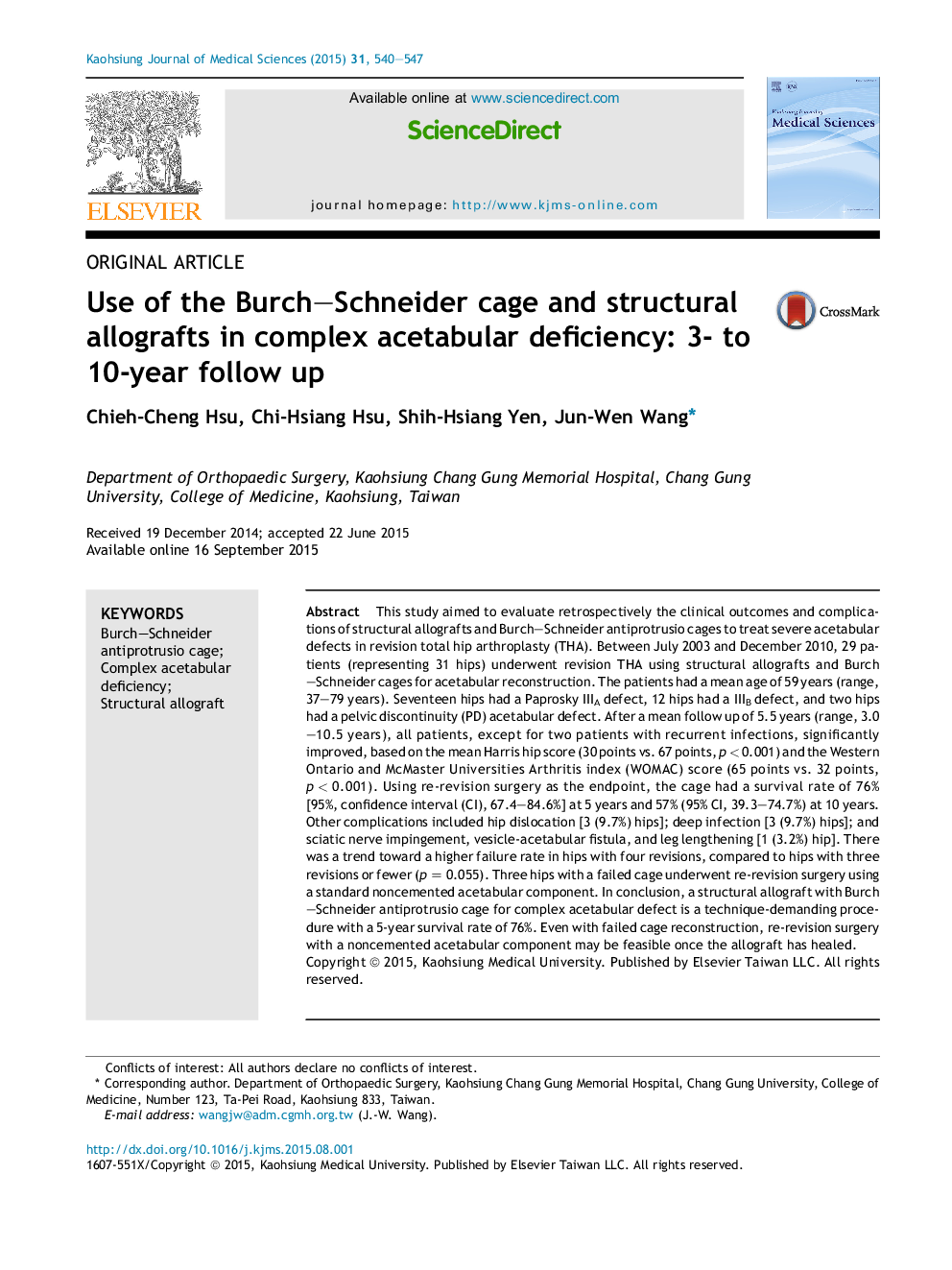| کد مقاله | کد نشریه | سال انتشار | مقاله انگلیسی | نسخه تمام متن |
|---|---|---|---|---|
| 3485189 | 1596917 | 2015 | 8 صفحه PDF | دانلود رایگان |

This study aimed to evaluate retrospectively the clinical outcomes and complications of structural allografts and Burch–Schneider antiprotrusio cages to treat severe acetabular defects in revision total hip arthroplasty (THA). Between July 2003 and December 2010, 29 patients (representing 31 hips) underwent revision THA using structural allografts and Burch–Schneider cages for acetabular reconstruction. The patients had a mean age of 59 years (range, 37–79 years). Seventeen hips had a Paprosky IIIA defect, 12 hips had a IIIB defect, and two hips had a pelvic discontinuity (PD) acetabular defect. After a mean follow up of 5.5 years (range, 3.0–10.5 years), all patients, except for two patients with recurrent infections, significantly improved, based on the mean Harris hip score (30 points vs. 67 points, p < 0.001) and the Western Ontario and McMaster Universities Arthritis index (WOMAC) score (65 points vs. 32 points, p < 0.001). Using re-revision surgery as the endpoint, the cage had a survival rate of 76% [95%, confidence interval (CI), 67.4–84.6%] at 5 years and 57% (95% CI, 39.3–74.7%) at 10 years. Other complications included hip dislocation [3 (9.7%) hips]; deep infection [3 (9.7%) hips]; and sciatic nerve impingement, vesicle-acetabular fistula, and leg lengthening [1 (3.2%) hip]. There was a trend toward a higher failure rate in hips with four revisions, compared to hips with three revisions or fewer (p = 0.055). Three hips with a failed cage underwent re-revision surgery using a standard noncemented acetabular component. In conclusion, a structural allograft with Burch–Schneider antiprotrusio cage for complex acetabular defect is a technique-demanding procedure with a 5-year survival rate of 76%. Even with failed cage reconstruction, re-revision surgery with a noncemented acetabular component may be feasible once the allograft has healed.
Journal: The Kaohsiung Journal of Medical Sciences - Volume 31, Issue 10, October 2015, Pages 540–547